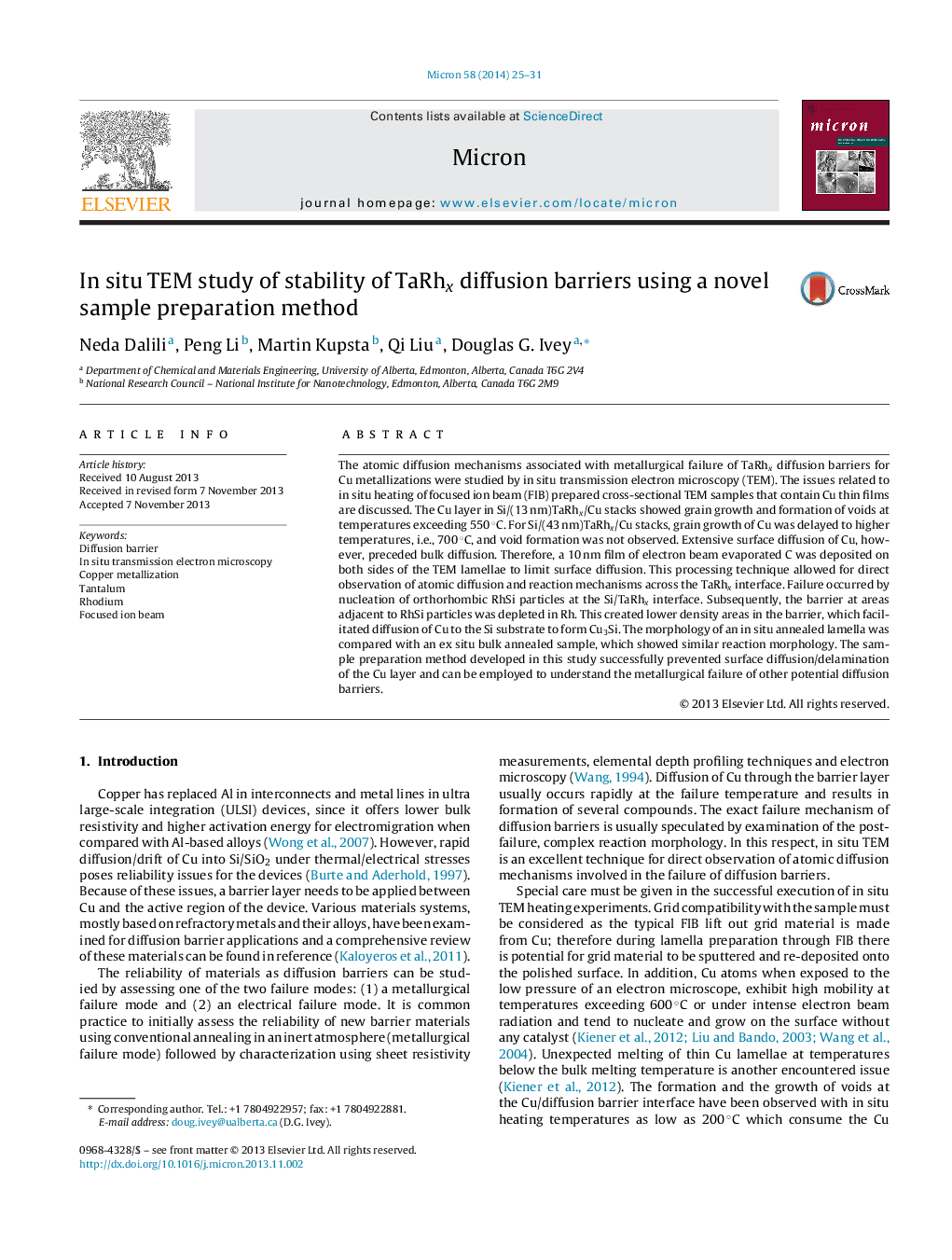| Article ID | Journal | Published Year | Pages | File Type |
|---|---|---|---|---|
| 1589079 | Micron | 2014 | 7 Pages |
•Atomic diffusion mechanisms responsible for failure of Ta-Rh barriers are studied.•Si/(13 nm)TaRhx/Cu stack failed by formation of RhSi particles at Si/TaRhx interface.•Issues related to in situ heating of TEM samples that contain Cu are discussed.•A novel TEM sample preparation method is developed to address these issues.•In situ and ex situ heated samples showed similar reaction morphology.
The atomic diffusion mechanisms associated with metallurgical failure of TaRhx diffusion barriers for Cu metallizations were studied by in situ transmission electron microscopy (TEM). The issues related to in situ heating of focused ion beam (FIB) prepared cross-sectional TEM samples that contain Cu thin films are discussed. The Cu layer in Si/(13 nm)TaRhx/Cu stacks showed grain growth and formation of voids at temperatures exceeding 550 °C. For Si/(43 nm)TaRhx/Cu stacks, grain growth of Cu was delayed to higher temperatures, i.e., 700 °C, and void formation was not observed. Extensive surface diffusion of Cu, however, preceded bulk diffusion. Therefore, a 10 nm film of electron beam evaporated C was deposited on both sides of the TEM lamellae to limit surface diffusion. This processing technique allowed for direct observation of atomic diffusion and reaction mechanisms across the TaRhx interface. Failure occurred by nucleation of orthorhombic RhSi particles at the Si/TaRhx interface. Subsequently, the barrier at areas adjacent to RhSi particles was depleted in Rh. This created lower density areas in the barrier, which facilitated diffusion of Cu to the Si substrate to form Cu3Si. The morphology of an in situ annealed lamella was compared with an ex situ bulk annealed sample, which showed similar reaction morphology. The sample preparation method developed in this study successfully prevented surface diffusion/delamination of the Cu layer and can be employed to understand the metallurgical failure of other potential diffusion barriers.
